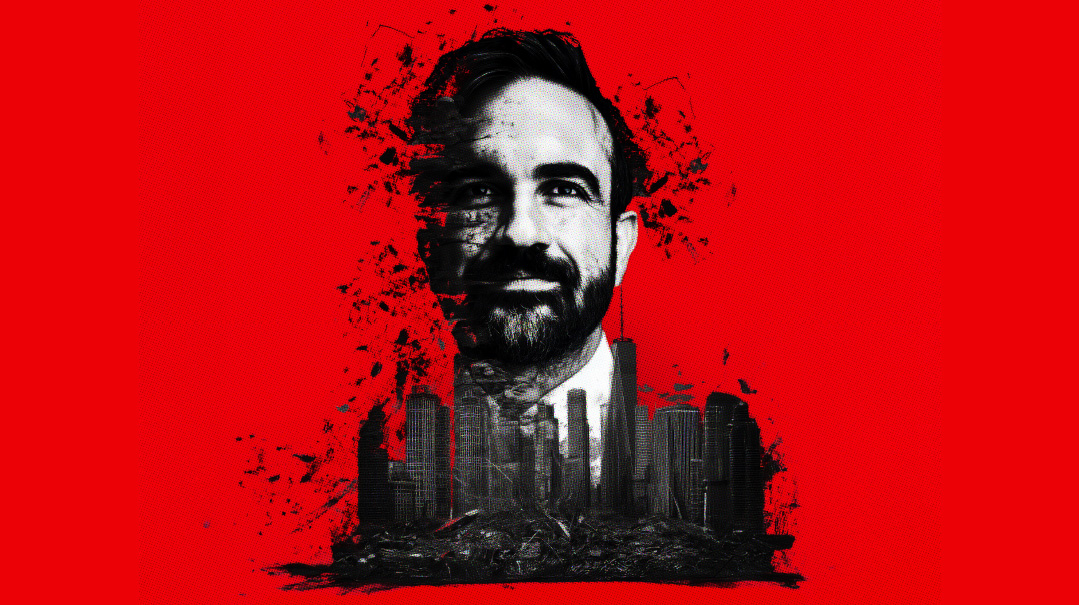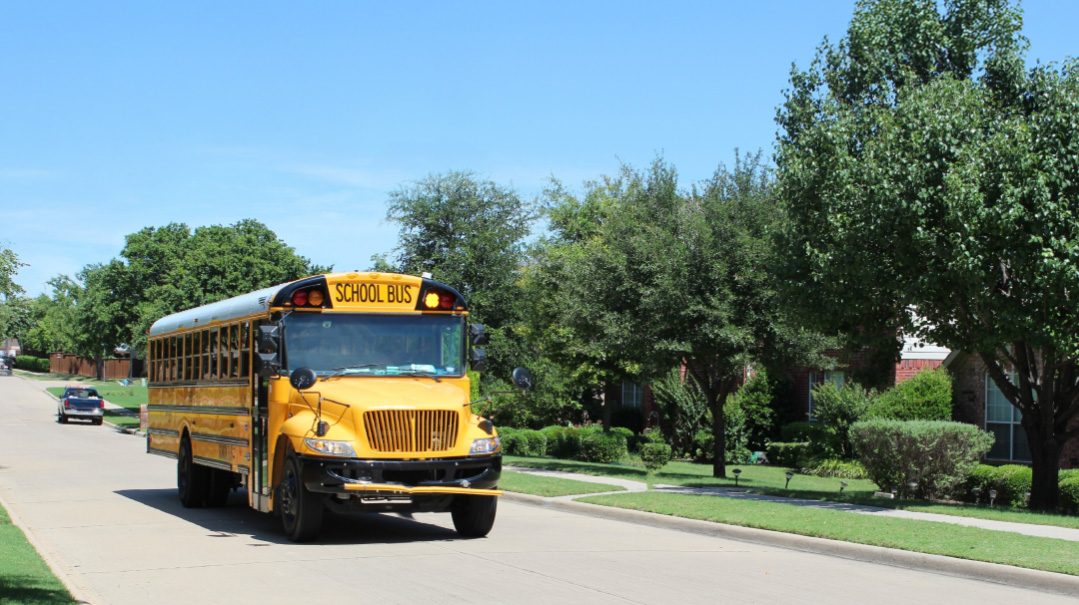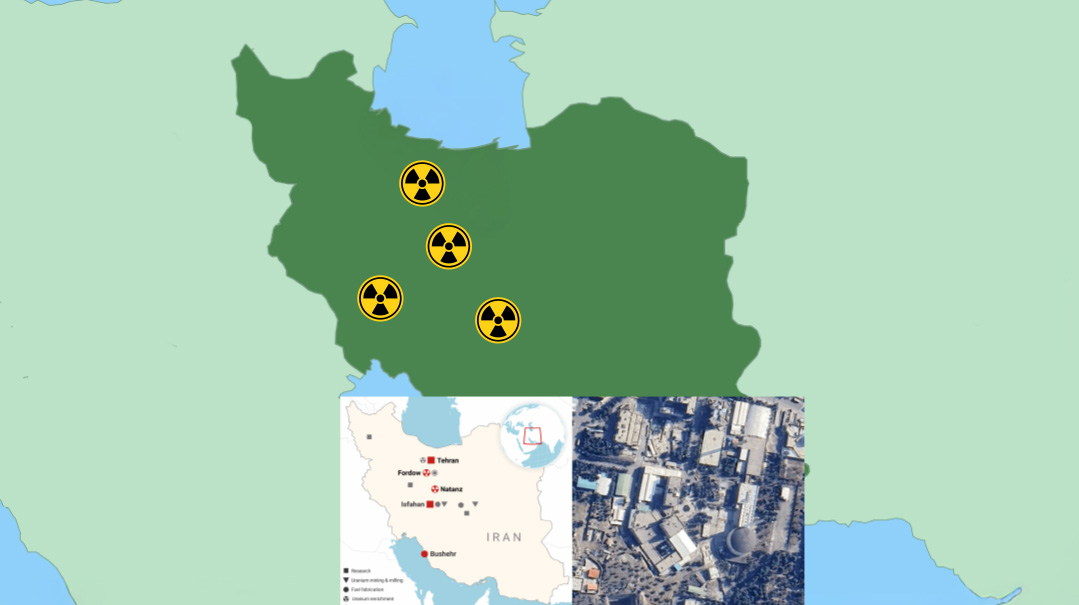Zero Tolerance
| February 27, 2024In the post–October 7 world, the once-notoriously lax conditions for Palestinian terrorists in Israeli jails have disappeared
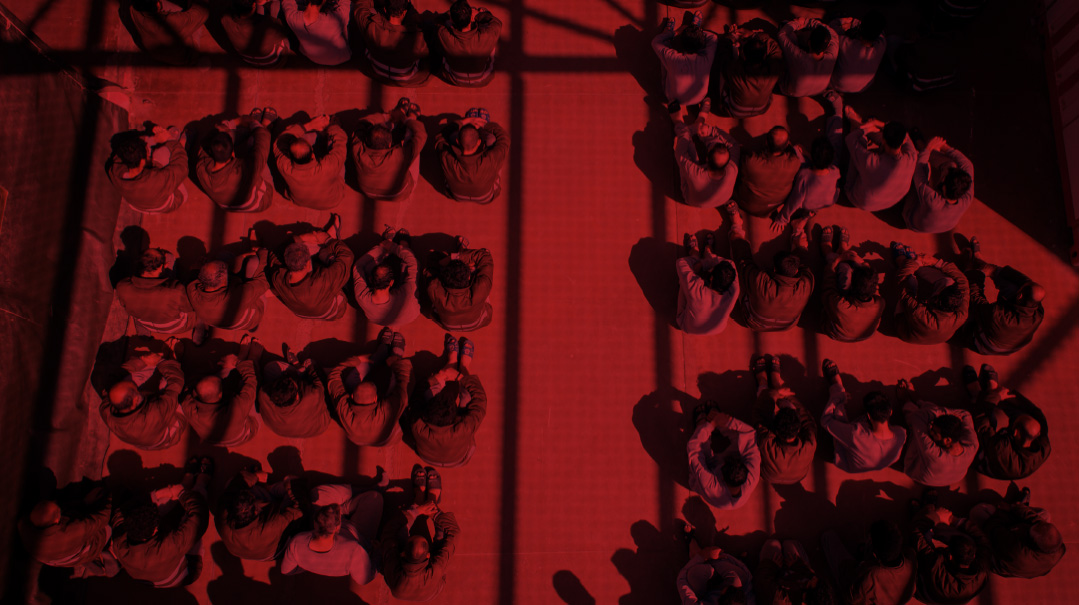
Photos: Itzik Belinsky
In the post–October 7 world, the once-notoriously lax conditions for Palestinian terrorists in Israeli jails have disappeared. Instead, as a close-up view of the holding cells for Hamas’s Nukhba murderers shows, jailtime is meant to serve as a deterrent that won’t be easily forgotten
T
he iron gate clanks opens. A stern-looking band of armed guards greets us.
Over there, behind those bars, is where the world’s most reprehensible criminals are incarcerated.
Welcome to the living nightmare of the Nukhba terrorists — those still breathing, for now.
We enter the gates of the detention facility at an isolated location in the south of the country. This prison, which covers hundreds of dunams, is the most isolated and well-guarded in the country. Its two compounds house more than a thousand Hamas terrorists from various sectors. The few perpetrators of October 7 who survived have been held in one of these compounds since the start of the war, and their ranks were later swelled by Nukhba terrorists who surrendered during the ground maneuver in Gaza. The second compound houses Hamas terrorists from Judea and Samaria.
We accompany the prison commander, Brigadier General Yosef Knipes, to Compound C — the Nukhba compound.
The complex is divided into four massive cages, among which are a number of tents, restrooms, shower stalls, and a water tap. Each compound is dominated by a secure control center, an interrogation room, and a courtroom designated for remote hearings. Guards patrol with weapons drawn 24 hours a day.
We join Keter unit forces preparing to enter for the roll call, one of four held each day. The prison commander briefs his men, and we receive our own briefing for an emergency scenario. The tension is high. On the other side of that gate are some of the vilest murderers of human history. A single mistake could turn our visit into a disaster.
The guards’ demeanor clearly communicates their intention: Any terrorist who tries to get smart will be signing his own death warrant. As we’ll see, there are no more games here. Zero tolerance is the new motto.
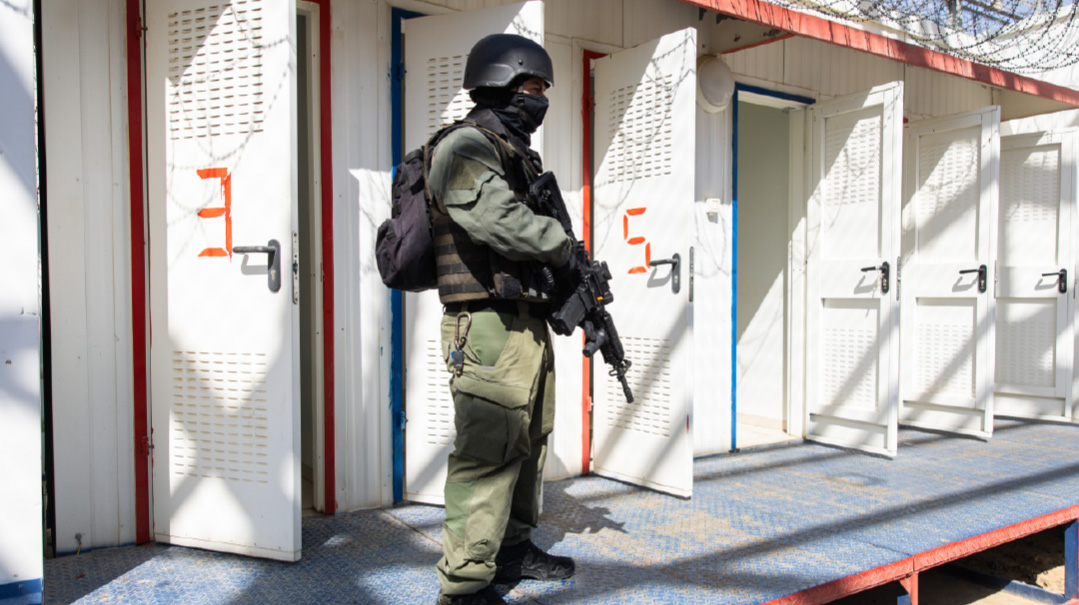
Guards now patrol with weapons drawn 24 hours a day
The door of the cage opens. The guards take up their positions in front of the terrorists, who stand in straight rows, heads bowed. If any of them tries to raise his head slightly to look at the guests, a single shout from a guard is enough. In the center stand four guards with riot shields and cudgels. The rest stand to either side with rifles drawn.
“Ten!” the shout rings out, and the first row of terrorists sits down.
If they only could, these terrorists would jump the two meters that separate us and do to me what they did on October 7 to people in the kibbutzim and moshavim, in homes and orchards, all of whom wanted nothing more than to live with them in peaceful coexistence.
But now, under the barrels of the guards’ guns, they don’t dare move a muscle.
And the counting continues.
“Twenty! Thirty! Forty!”
At the end of the roll call, it’s the dog’s turn to walk among them. His job is to sniff for prohibited substances. Meanwhile, a number of guards inspect the bathrooms and shower stalls.
The roll call concludes with the cry, “Disperse!” A ten-second timer is activated. Any prisoner doesn’t make it back to his cell in time runs the risk of solitary confinement.
Welcome to the world of Israel’s post-October 7 security prison system. Where once this system had been a byword for laxity — with Palestinian terror groups effectively running their own fiefdoms within its walls, deterring any attempt to crack down with the threat of violence in the West Bank or Gaza — that is now at an end.
Conditions in the prisons are in line with Israeli and international law, but the belief that prisoners can be rehabilitated has now been discarded, replaced with a clear-eyed view of the rules that govern the two sides’ interactions.
I ask a guard, “What’s it like working with these guys?”
“They hate us, we hate them,” he replies without hesitation. “The only reason they’re still alive,” he mutters, “is our adherence to the laws of the humane Jews they tried to murder…”
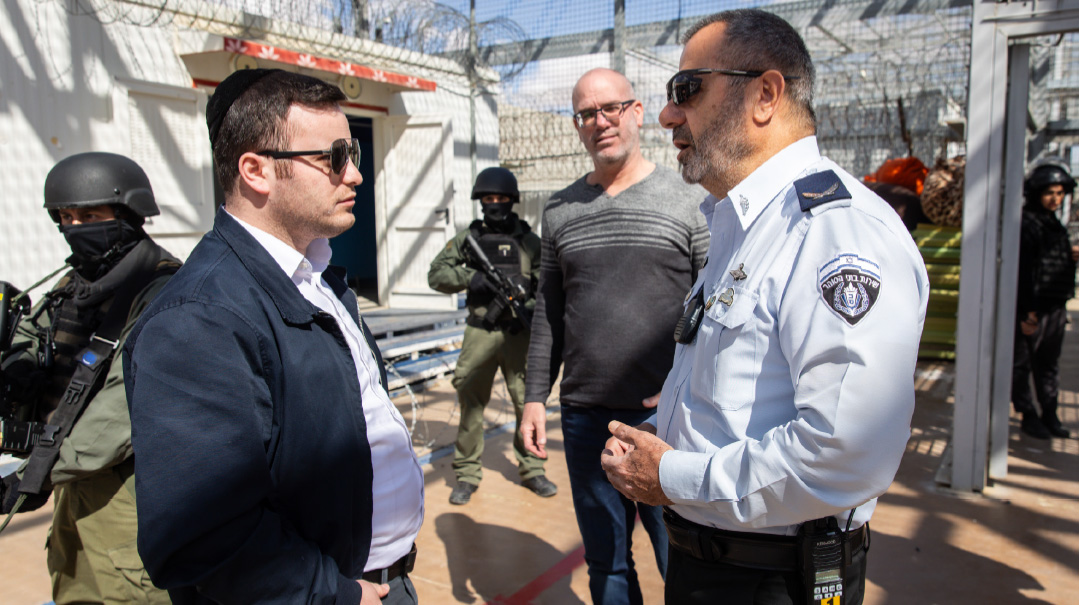
FUN-TIME’S OVER Brigadier General Yosef Knipes (R) tells Mishpacha’s writer that Nukhba terrorists incarcerated in Israel’s security prisons should feel like they’re in jail
Party in Prison
Over the past few years, the topic of how security prisoners are treated has been sensitive. Media reports painted a rather gloomy picture, and for good reason. Fear of our own shadow, as General Knipes puts it, and the influence of elements we’ll discuss more broadly below, gave rise to an absurd situation. A terrorist who murdered Jews could laugh all the way to prison, where he would receive VIP service on a level that common criminals could only dream of.
Their conditions included regular visits from friends and family, tolerance of cell phone use, cooking plates and TVs in the rooms. And the food was of a standard that most Israeli citizens couldn’t afford: premium butcher’s meat, fish, and poultry. There were cosmetic products available, and the canteen even stocked candy and confections. The Palestinian Authority, which Biden sees as the ultimate solution to all the Middle East’s problems, made sure to deposit a substantial sum in each prisoner’s account every month. On top of all this, the terrorists could design their cells as they saw fit, with shelves full of greetings from Fatah and Hamas, curtains and dividers, and any personal possessions they wanted — as if it were a summer camp in the Catskills.
Until a decade ago, they could even study for degrees, until the state brought that party to a close, over the outcries from the left.
Against this backdrop, it’s no wonder that the rate of security incidents within the walls of Israel’s prisons has spiked alarmingly in recent years. The 2021 Gilboa Prison escape of six inmates, prisoner riots over masking of cell phones (which are officially prohibited, mind you), and a host of other incidents, each more absurd than the last. The warning signs finally became too glaring to ignore, and a committee was convened under former Prison Services commissioner Shalom Kaatabi to prepare a comprehensive report on the subject.
The report on the Kaatabi committee’s conclusions was classified. But the issue achieved notoriety following a bill proposed by Religious Zionist MK Orit Strock to release it that was struck down by the Bennett-Lapid coalition. When she joined the current government as head of the Ministry of Settlements, she decided to use her parliamentary immunity to read sections of the report aloud in the plenum to the public.
Some of the passages read by Strock describe in detail the autonomy the terrorists enjoyed inside the prison. Such autonomy created a hotbed for terrorism while tying the guards’ hands.
The report also found “a discrepancy between the provisions regarding the treatment of security prisoners and the reality on the ground. The current operational concept allows the prisoners and terrorist organizations to control many aspects of daily life within the security wings, to the detriment of the prison command, whose grip on those areas has weakened.”
Saying the quiet part out loud, the report stated that “the autonomy enjoyed by prisoners directly impacts prison security by, among other things, limiting entry of staff to the prison wings and yards, rendering impossible the continuous supervision of prisoners inside their cells, complicating placement and transfer of prisoners between cells or wings and opening and closing of cell doors, which affects the implementation of physical security checks.”
The report recommended that the government institute a comprehensive reform of the security prison system. The aim was not to impose new conditions that wouldn’t meet Western standards, but simply to recognize that these prisoners are terrorists who murdered innocent civilians and present an ongoing security threat to the state.
In a civilized world, summer camp is for eight-year-olds; murderers and terrorists are supposed to be in prison. But unfortunately, the report had hardly any effect. Not only were the committee’s recommendations not really implemented, but the situation actually worsened.
“We fell in love with quiet and frightened ourselves into inaction,” explains Yosef Knipes in a conversation with Mishpacha. “The attitude that trickled down to the lower echelons from higher up was defeatist. There were those who favored continuing this absurd situation on the pretext that doing anything about it would only lead to unrest in Judea and Samaria. Whenever we tried to reestablish control in the prisons, the prisoners would call their families and the activists — with cell phones they weren’t supposed to have — and raise a ruckus.
“Thus, the prison guards’ hands were tied. We reached a point where we were stripped of any deterrence against terrorists and murderers. That’s unacceptable.”
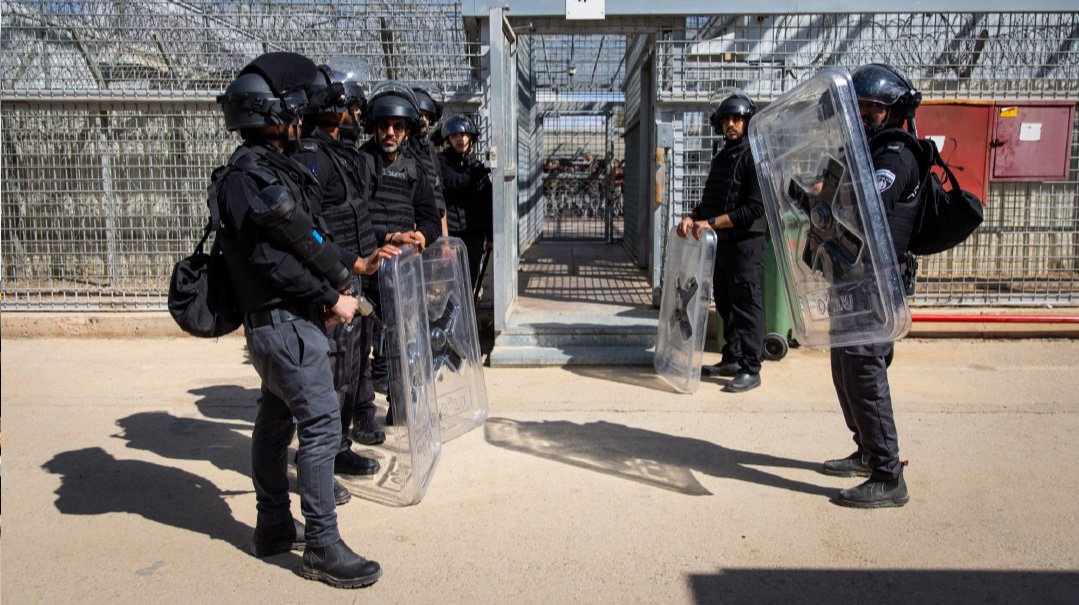
Now when Compound C inmates report for roll call, they face a phalanx of guards with cudgels and riot shields
No More Games
Obviously, this whole situation changed, as we saw when we arrived at this prison for this visit. Brigadier General Knipes says the change started at the end of the Bennett-Lapid government, but built up strong momentum under the current government — especially after the Hamas attacks of October 7.
“Even during the previous commissioner’s tenure, things started moving in a very specific direction,” says Knipes. “The conditions, the equipment, the benefits, the pitas — all these began to go in a direction opposite from what we were used to.
“But the real change came on October 8. Dozens of Nukhba terrorists began pouring into the prison, ultimately growing to hundreds. They had probably heard stories from Yahya Sinwar back in the day about what the prison conditions were like. If they were expecting the same thing, they got a huge disappointment.”
Even Gazans captured and incarcerated in Israel would discover that the worst wasn’t necessarily behind them. “Residents of Gaza, Hamas has opened the gates of hell on your heads,” the IDF’s Arab language spokesperson declared in the early days of the fighting. This turned out to be true on all fronts.
Aside from a pair of hot dogs twice a week, prisoner rations consist of sliced bread, cabbage, and rice. The drinking taps and showers are active for an hour a day, the mattresses and blankets are taken out during the daytime, and apart from the four daily headcounts, they only have an hour a day to wander in the yard.
The guards who come into contact with them are armed with cudgels and drawn guns, which will be used at the slightest hint of nonsense. They undergo thorough training in situation management to prepare for this duty.
“We drill once a week to practice our emergency procedures,” says General Knipes.
The emergency scenarios covered in the training include riots and throwing of objects, attacks on guards, and, most seriously, a prison guard being taken hostage. In this last case, any means of quelling the situation becomes legitimate. But the prison commander can’t handle such a scenario on his own.
“This scenario is what keeps every prison commander up at night,” Knipes confesses. “In the week leading up to your visit, I couldn’t shake the fear that something like this would happen. This is a risk we face all the time.”
I ask Knipes if this nightmare scenario has ever actually happened.
“Fortunately, no such incident has ever occurred within the walls of the current prison,” he says. “The worst incidents we’ve suffered involved objects and cans being thrown at guards. If a prison guard is actually taken hostage, members of the Masada unit — that’s the IPS elite commando unit, trained to handle such situations — would be rushed to the scene.”
In the meantime, they’re taking all precautions, especially since October 7. Hundreds of panic buttons have been installed in the corridors that can instantly put the entire prison on alert. The procedure for transferring prisoners from place to place was changed to ensure that at no point do prisoners outnumber guards. And the frequency of drills has increased to once a week.
We go to the other cage. At the end of the roll call there, we began to walk cautiously among the prisoners, accompanied by guards, to experience one of these tents from the inside.
The furnishings are spartan. There are no mattresses or blankets, closets or shelves. Nothing. Each inmate gets an iron bunk and a piece of cloth.
“It took us two whole months to clear everything out of these tents,” Knipes recounts, shaking his head. “It’s unbelievable how much stuff we confiscated. Mountains of cooking plates, transistors, and TVs, shelves and cabinets of all types and sizes. This was a state within a state.”
How do the prisoners fill their time these days? Quite simply, they don’t. The pared-down daily schedule described above allows plenty of time for personal reflection. I ask Knipes if it wouldn’t be better to give inmates some type of distraction, such as being put to work.
“There’s no doubt that boredom is a recipe for disaster,” he admits. “No one knows better than we do what boredom can lead to, especially among hate-filled murderers. But these are bloodthirsty criminals, not people who can be rehabilitated. The risks of putting them to work vastly outweigh the risks of letting them dry out in their cells.
“Our current approach is to make coming back here the last thing any prisoner wants to do. We publicize on all the platforms that the days of pampering are over. What happened before won’t happen again.”
Knipes emphasizes that the prison staff has been newly empowered to take a proactive stance in handling the inmates, and that has greatly improved the atmosphere.
“In the past, guards weren’t allowed to go in with cudgels, let alone with weapons drawn,” he says. “Not anymore. In the past, guards were afraid of certain ‘prisoners of status.’ No more. Today the guards have instructions on how to deal with prisoners and make it clear who’s in charge. These are concepts that didn’t exist in the past. The policy has been completely transformed.”
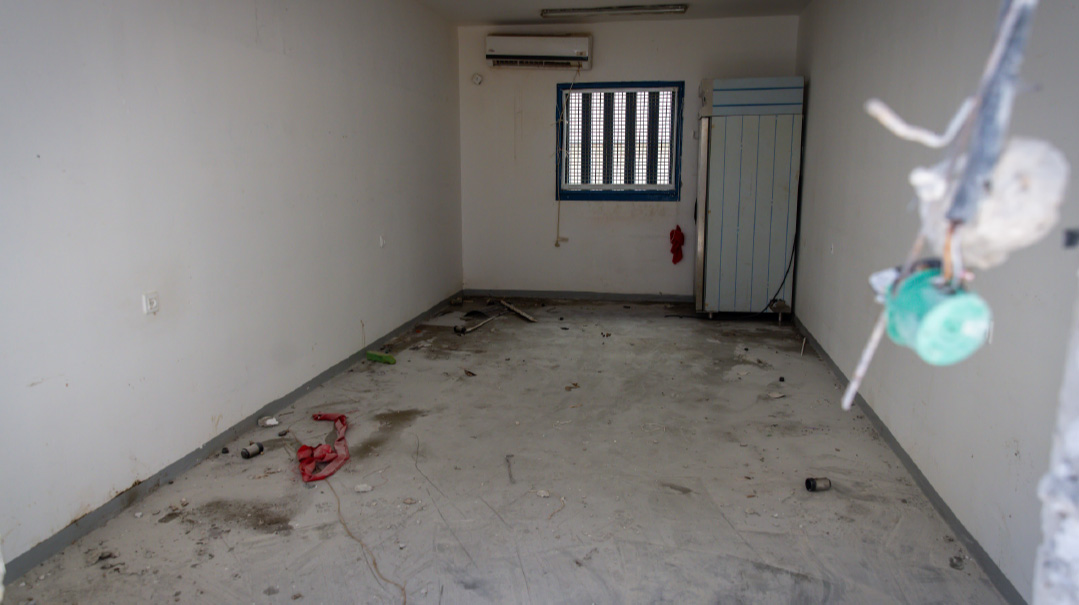
It took General Knipes’s men two months to clear out the TVs, cooking plates, and personal shelving the prisoners had accumulated
New Spirit
We continue to Compound B, where Hamas terrorists captured in Judea and Samaria area are held. Unlike the previous compound, which consisted of tents, this one is a permanent structure, each wing containing several cells housing up to ten terrorists each. The roll call is done separately in each room, with the terrorists hunched over at the end of the cell.
“Here you can see another aspect of the drastic change in policy,” says General Knipes, pointing to what used to be the canteen room. “This is National Security Minister Itamar Ben Gvir’s flagship program.”
Whether you agree with his politics or not, Ben Gvir deserves a lion’s share of the credit when it comes to converting luxury hotels for convicted terrorists back to their original function: penal facilities.
“The aim is to accelerate construction of dozens more cells in the security prisons, which will enable the incarceration of 888 additional security prisoners, 280 of whom are destined for this very facility,” says Knipes. “Where will the space come from? Well, the canteen rooms, the freezers, and the storage rooms. All the luxuries of the past are being demolished to make way for prison cells.”
I ask Knipes if these actions have stirred opposition from the usual suspects — elements such as radical leftist NGOs, the Red Cross, etc.
“Since October 7, there have been no NGO visits,” he says. “Regarding the Red Cross, Minister Ben Gvir’s office gave the order not to allow them to visit as long as they say they can’t meet with the Israeli hostages being held by Hamas in violation of international law.
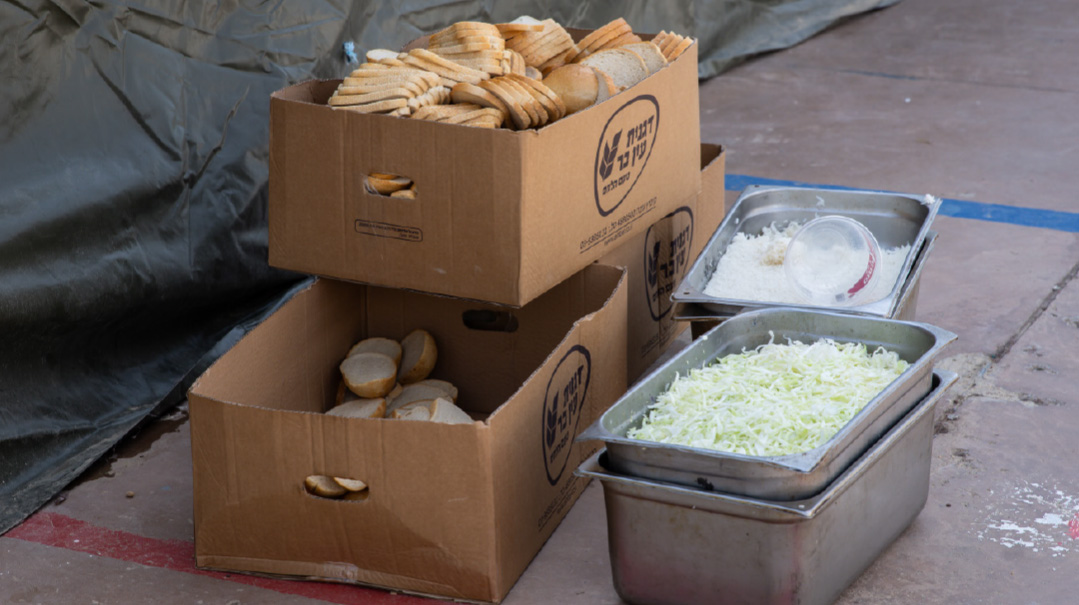
Jailed terrorists are seeing a downtick in living conditions — Premium butcher’s meat and poultry have given way to sliced bread, cabbage, and rice
“This new spirit has rejuvenated us in the executive branch. When the political echelon has our backs and gives the professionals in the field the authority to do their job properly, it produces results. There are no more riots, no more disturbances. I think it’s safe to say that the chances of any terrorist coming back here have dropped precipitously. It’s the most basic common sense to make prison a painful experience, something they’ll fear, that will be etched into their memories.
“While we don’t set policy, as the ones who live the reality on the ground, we can say unequivocally — we hope it stays this way.”
I ask him if this new situation came about because of emergency measures taken during the current war — and if so, how long it can be expected to last.
“Most of this is a product of the new policy, which is unrelated to the war,” he insists. “The war created the leverage to fully implement this policy on the ground, but everything relating to the amount of time they can spend in the yard, showers, meals and food, is standing policy.
“The outside intervention in the management of the prison by the IPS intelligence officer is also officially over. In a meeting held by IPS Commissioner Kobi Yaakobi, he made it unequivocally clear to the commanders — you’re in charge in the prison under your command, for better or for worse. But this also means that you’ll bear full responsibility in the event of a disaster.
“We very much hope that the current situation will continue for a long time, and that the trend won’t turn in the other direction.”
I ask Knipes what he thinks can be done to ensure the current situation does indeed continue.
“There has to be legislation to anchor our recommendations in the law. We hope that the commission of inquiry formed to investigate the war and the fiasco of October 7 will have the wisdom to shine a light on what was going on in the security facilities, and see how different the current situation is, so we have the tools to reinforce the change and bring it to maximum effect.”
(Originally featured in Mishpacha, Issue 1001)
Oops! We could not locate your form.

